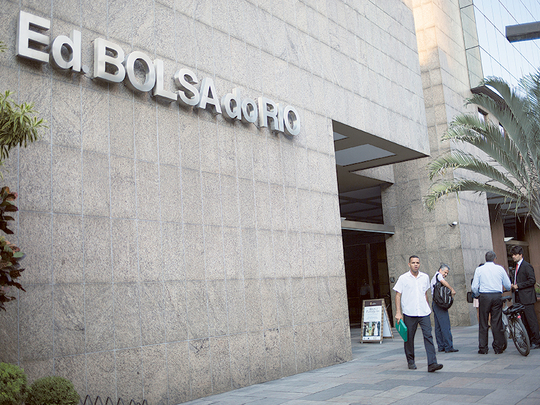
Last Wednesday, I was fielding questions from a couple of CNBC reporters on the trading floor of the New York Stock Exchange. One thing they asked me about was emerging markets, which was great as it allowed me to talk about our Multi-Asset Class (MAC) team’s views on these important regions. It also reminded me of how little space we’ve given the subject in CIO Perspectives so far.
Now is a good time to put that right. Emerging markets equities have outperformed the developed world by around four percentage points since mid-February. On the bond side, hard currency sovereigns returned more than 5 per cent in the first quarter, while local currency was up more than 11 per cent.
Moreover, while news out of the developed world was light last week (the European Central Bank struggled to match the excitement it generated in March), news out of the emerging world bordered on the historic.
Recent news underlines political change in Latin America
It started on Sunday night, with the lower house of Congress in Brazil voting to impeach President Dilma Rousseff. This was the high watermark to-date of a wide-ranging scandal that is testing the country’s political and judicial institutions.
A few days later, Argentina returned to the international bond markets after 15 years. And what a return it was. The government sold $16.5 billion (Dh60 billion) worth of bonds and could have put out four times that. Buyers got a 7.5 per cent yield on the 10-year issue and on Friday the “holdouts” in Argentina’s defaulted debt were paid, ending one of the longest-running sovereign-debt disputes.
Both events underline the theme of electorates turning toward more market-friendly leadership in the region, but also two of our long-standing emerging markets themes: at the company level, businesses that benefit from the rise of the domestic consumer, and at country level, economies that benefit from structural reforms. Orthodox economics tend to see the two things as intimately linked, and that may explain why Brazilian assets have rebounded so strongly despite such political turmoil.
It is also worth recalling earlier discussions in CIO Perspectives on the stabilisation of the US dollar and oil, both of which have been positive for emerging markets.
Our take on emerging markets remains optimistic — but cautious
And yet, while we on the MAC team generally have been in favour of increasing emerging markets exposures after the precipitous drop early in the year, our preference has been for shifts that are both cautious and tactical, seeking to exploit short-term moves that may or may not consolidate into something more fundamentally driven.
And we don’t think the fundamentals are there quite yet, which is why more broadly we favour emerging markets debt over equity and hard currency bonds over those issued in local currency. As long as investors are being well compensated for taking credit and duration risk, our overall caution would weigh against adding high-volatility local currency risk at this stage. We also expect the Federal Reserve to raise rates one or two more times this year, which could give the dollar short-term support and take the wind out of emerging market sails, especially in local currencies.
That means we missed some of the upside despite timing our recent increase in exposure well. But it fits with our overall view that these past two months have seen a “relief rally” in riskier assets rather than a genuine return of confidence, and that the fundamentals have not changed much since the start of the year.
Relative value still favours US high yield
For the moment, we feel that the marginal dollar of risk should still go to US high yield bonds before it goes to emerging markets. Moreover, when I spoke at a conference with one of my emerging markets debt colleagues recently, he agreed that, while he saw many discrete opportunities in his own asset class, high yield was a more attractive risk-adjusted prospect. High yield spreads have since narrowed, but in my view that is still true.
The fundamentals can change, of course. Our colleagues in emerging markets debt are certainly excited about Latin America, in particular, and while I’m not 100 per cent persuaded yet, there’s no denying that part of the world bears watching closely.
The new administration in Buenos Aires is still very young. Likewise, the process in Brazil may take a long time to play out and the story can quickly turn upside down from the way markets currently read it — as emblematic of some of the headwinds that emerging markets still face. Nonetheless, once it’s clear that the political scene really is changing in this region, turning those headwinds into tailwinds, the yields on offer could present some very interesting opportunities.
— Erik Knutzen, Chief Investment Officer — Multi-Asset Class, Neuberger Berman







